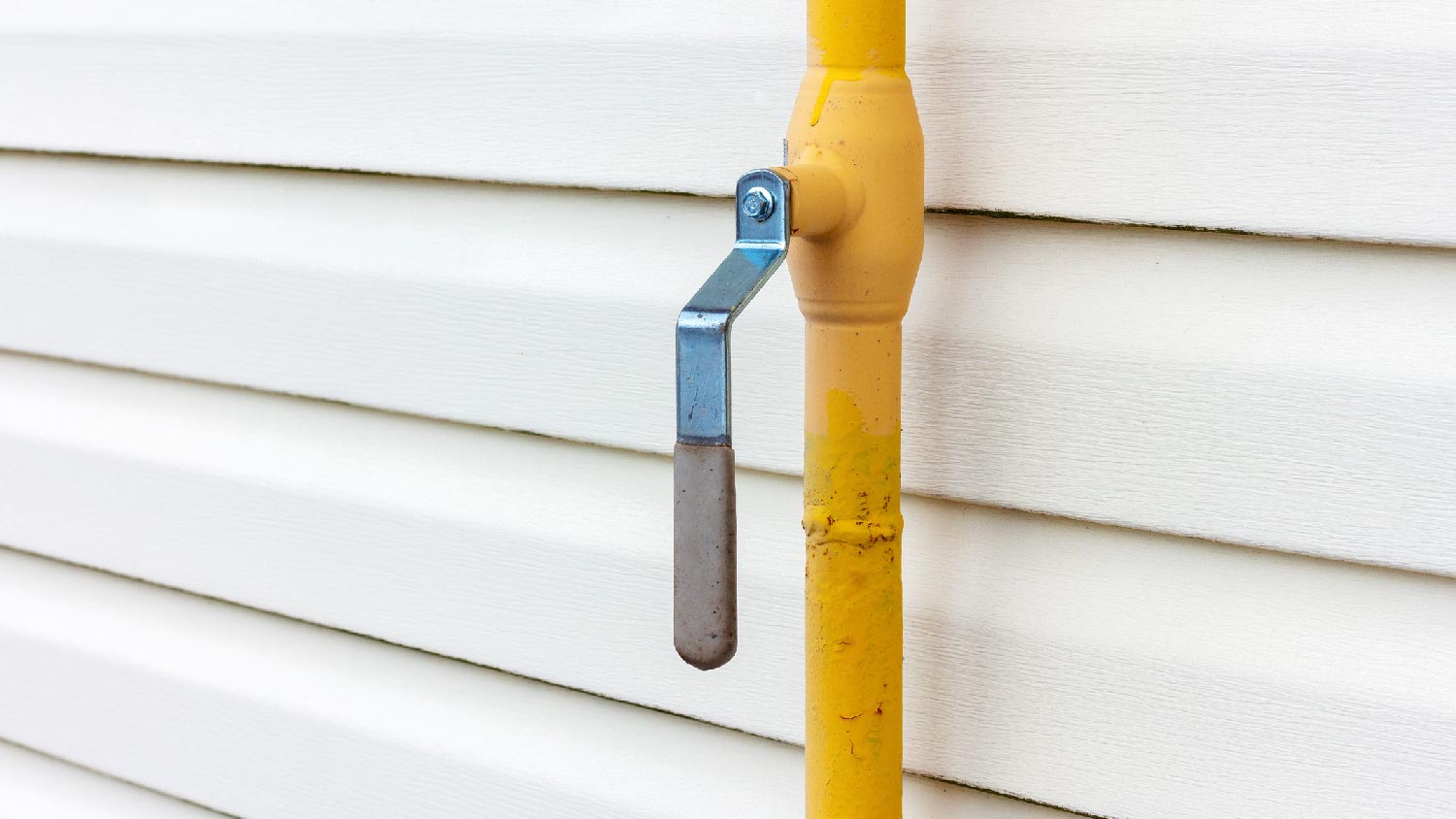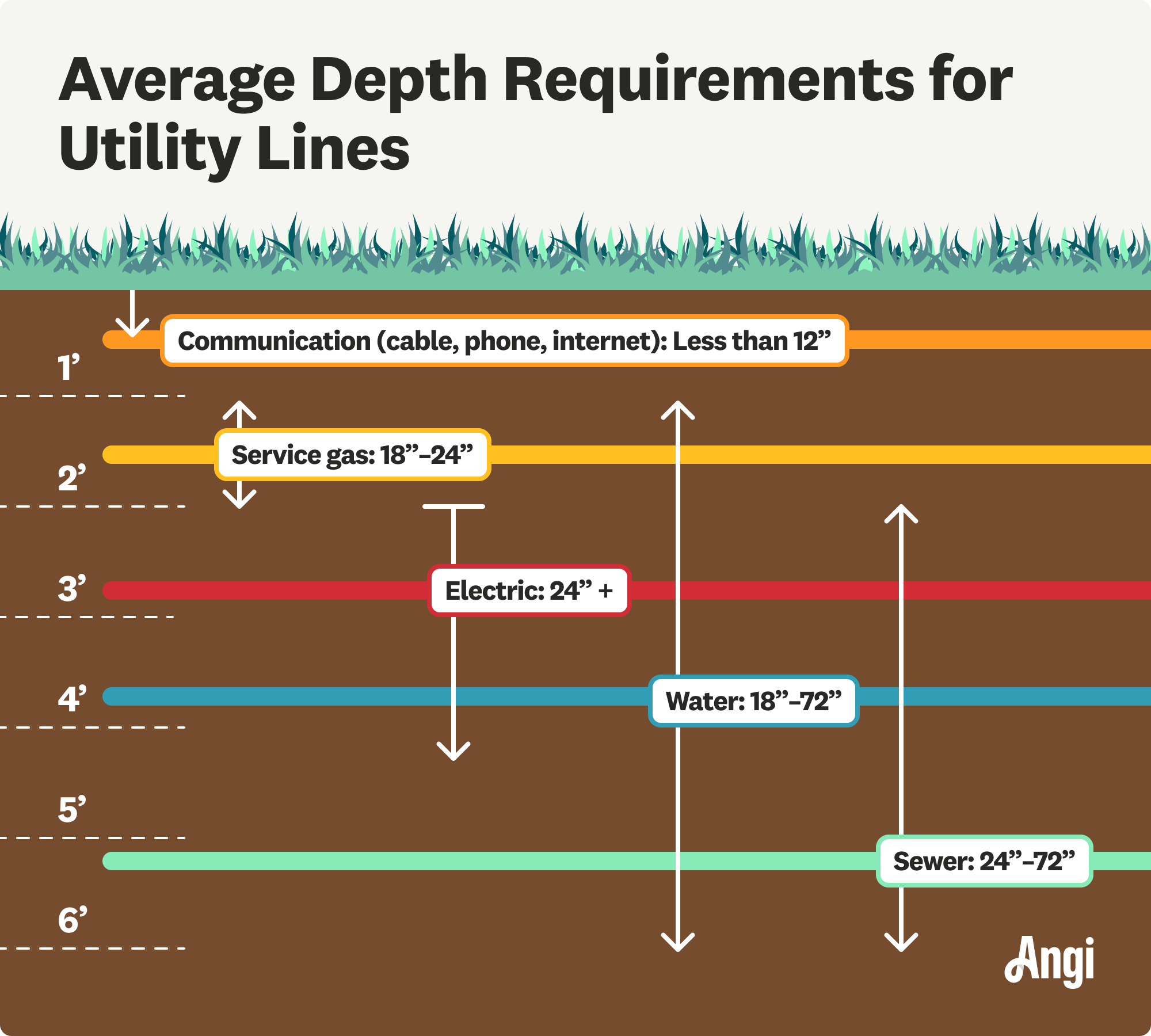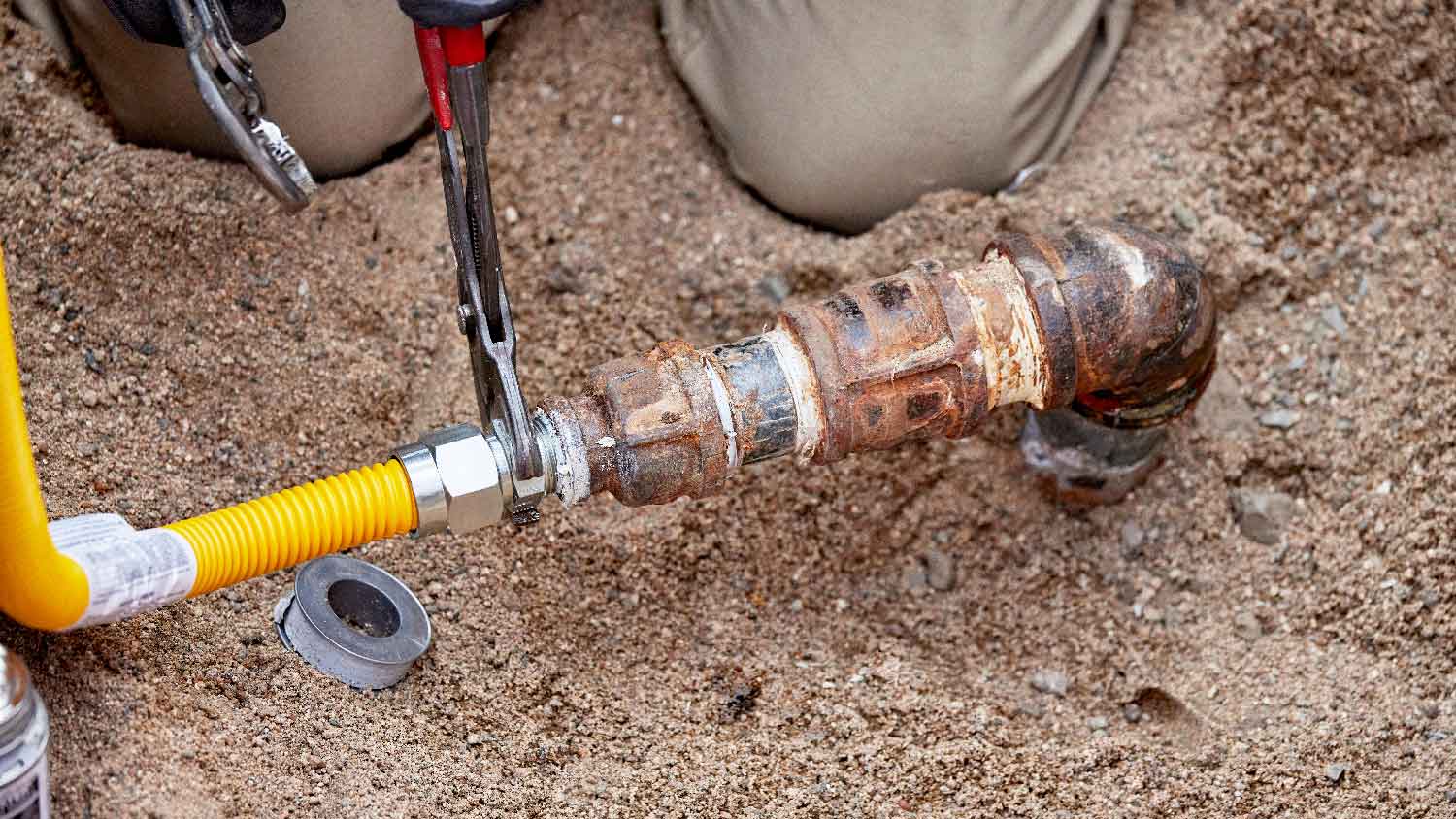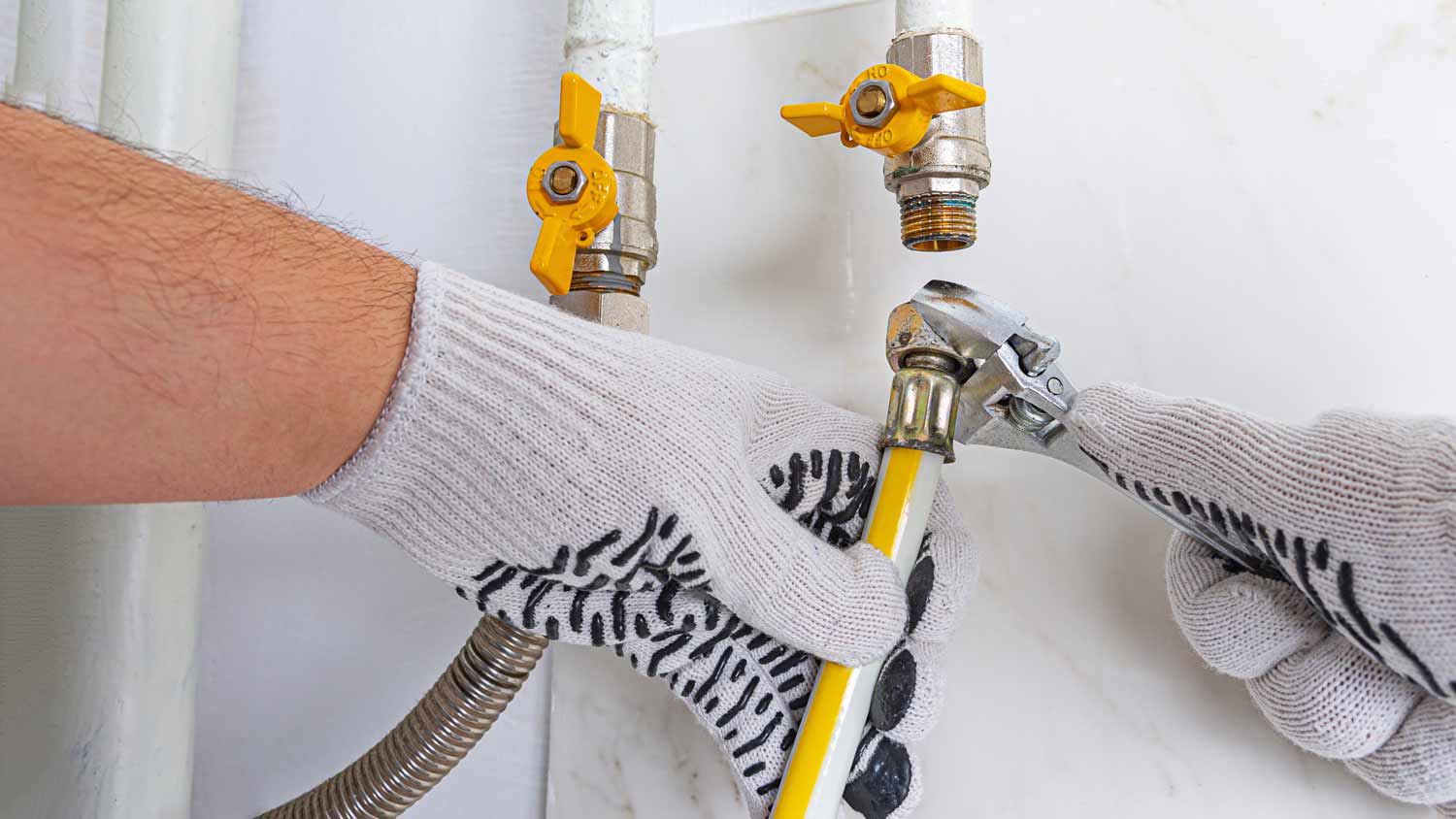How Deep Are Gas Lines Buried? Dig Into the Requirements
When you’re near gas lines, it’s no time to play a guessing game


Gas main lines are located by streets and roads, and they’re buried 24 to 48 inches below the ground.
Service lines that transport natural gas from a mainline to a home are buried between 12 to 18 inches underground.
Local regulations, the type of line, and the location determine how deep the gas line is buried.
Call 811 to schedule a professional service to locate and mark gas lines before digging or excavating.
The question of how deep are gas lines buried is one of safety, as inadvertently damaging gas lines can be dangerous. Line depth can vary based on the line type, with 18 to 48 inches being the most common for main and service lines. However, in most areas, 18 to 24 inches is more common. Keep reading to dig into the dirty details.
How Deep Should You Bury Gas Lines?

In the U.S., gas lines are required to be buried at least 18 inches underground. Main gas lines are usually buried 24 inches below the ground’s surface to ensure minimal disturbance. In some cases, gas lines may be buried as far as 48 inches underground, depending on state and local regulations.
Factors That Affect How Deep Gas Lines Are Buried
Gas line depth can vary for several reasons. In addition to knowing about the depth, you should Call-Before-You-Dig or 811, a service that provides access to local underground utility marking services, before doing any work near gas lines.
Local Regulations
The required gas line depth varies by local government regulations. While 18 to 24 inches is standard, some locations may only require a 12-inch depth, and that shallower depth may determine where you can dig a trench or complete other dirt work. In areas where gas lines may have been buried for decades, gas line depths may not meet current regulations, making it even more important to call 811.
Commercial vs. Private Use
Lines buried on private property may be buried at shallower depths of 12 to 18 inches. Commercial main lines are usually buried at 24 inches, though they may be deeper depending on distance to roadways and other types of urban infrastructure.
Main vs. Service Lines
Gas main lines are buried between 18 to 24 inches deep, though they may be as deep as 48 inches in some areas. Service lines transporting natural gas from the main line to other locations are typically buried at 12 inches on private property and 18 inches near roads. However, older lines may have been installed before current regulations were enacted. Older gas lines could be at depths outside the norm.
Type of Gas
Most of the time, you’ll be dealing with natural gas that’s located in pipes buried 12 to 48 inches underground. The exception is liquified natural gas, which gets buried at depths of 100 feet or more.
How Often Do Gas Lines Need To Be Replaced?
On average, gas lines need replacing every 50 years as long as nothing damages the pipes. Pipes that transport natural gas are not immune to damage from corrosion, pressure, and other types of stress. They can also suffer damage from tree roots as they grow over time or excavation that’s done too close to the line.
How to Maintain Gas Lines

The local utility company maintains the gas lines, checking them regularly for leaks or damage up to the point where they enter private property. These pros will periodically measure pressure, check for pipe deformations, and make appropriate gas line repairs to maintain pipe strength and integrity.
Homeowners are responsible for the maintenance and repair of the gas lines on their private property. Natural gas is highly flammable and repair and maintenance should be left to a certified technician, gas fitter, or plumber. However, if you notice anything suspicious, like a hissing pipe or rotten egg smell, immediately open windows and doors and call a local natural gas plumber to check the lines.
Frequently Asked Questions
Call 811 to locate and mark the gas lines at least three days before digging. In many areas, you can dig within 18 inches of the lines, though in some locations, the distance may be further. Check local regulations, as you may need a utility company representative onsite when digging. Document your calls to 811 and precautions taken to avoid gas lines. A homeowner can be held liable for hitting a gas line in some cases, but contacting the proper authorities and following all guidelines can offer protection.
No, you cannot plant a tree above a gas line. Tree roots grow and spread over time and can sometimes dent, crack, or penetrate a gas line. Those same roots may also cause accessibility problems for maintenance or repairs. You can generally plant vegetation with non-invasive root systems, low-growing vegetation, and flower beds near gas lines.
You can sometimes install a fence over a gas line. Fence installation typically requires a two-foot depth for posts, so if the lines are shallower than two feet, you cannot put a fence post over the line. You’ll need to call 811 to get the gas lines located and marked before you start the project.














